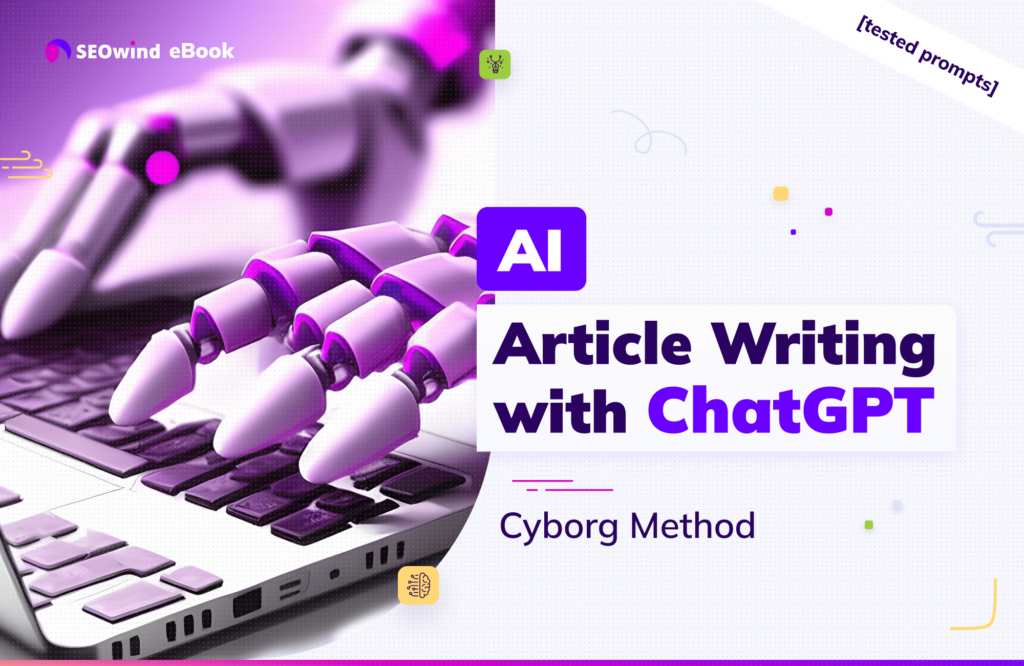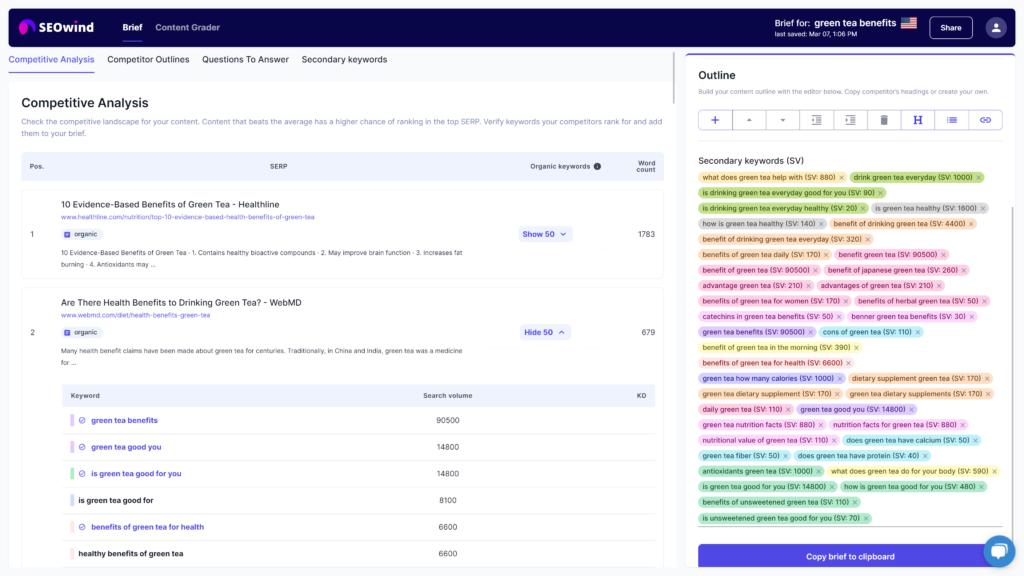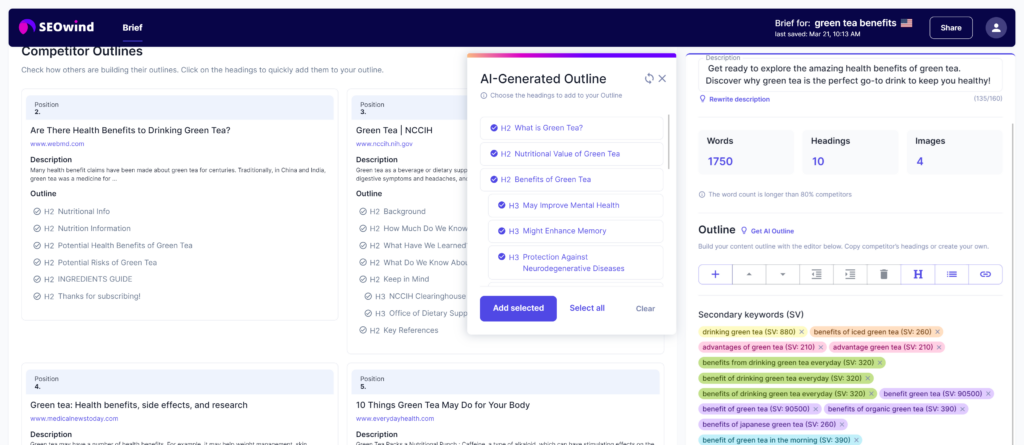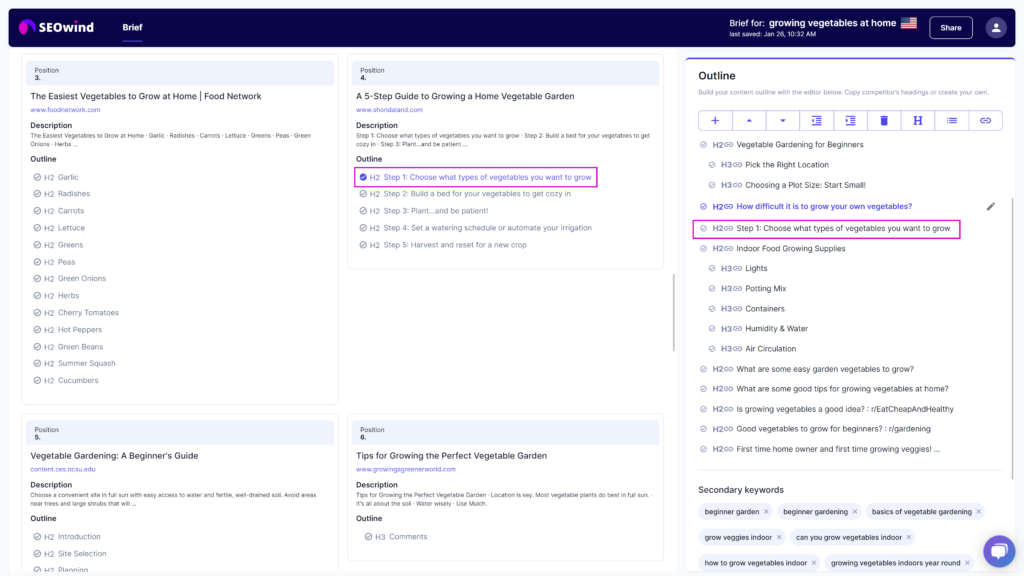Are you overwhelmed by how much time writing blog posts take? Do you struggle to meet content creation deadlines but want to maintain quality? Look no further: Artificial Intelligence (AI) has your back! In this article, we’ll explore how to write a blog post fast— 5,000 words or even more in just one hour – using advanced AI tools. By harnessing the power of automation and machine learning, you’ll be able to drastically reduce the time spent writing while increasing output volume without sacrificing quality.
Introduction to Writing a Blog Post Fast
Writing high-quality blog posts can often be challenging and time-consuming. Your target audience must receive informative and engaging articles. Crafting these takes prolonged research periods, brainstorming ideas, outlining concepts, drafting copy, editing, optimizing for SEO purposes—and let’s not forget marketing! Consequently, developing strategies and employing helpful technologies such as AI tools can save precious time and increase efficiency. In the following sections, we’ll delve into methods like the Cyborg approach, leveraging top AI platforms – including SEOwind – and take action-oriented steps towards markedly improving productivity when composing captivating blog posts rapidly.
How do you write a blog post in 30 minutes? Is it possible?
Writing a blog post in 30 minutes is an ambitious goal. Still, with the right strategies and tools, it is possible to create high-quality content within a short time frame. To achieve this feat, you need to keep several critical factors in mind:
- Preparation: Before starting your writing session, ensure a clear blog post topic and basic background information. You should already have researched the subject matter. The best is to have a list of topics in your content calendar.
- Focused approach: When drafting your blog quickly, focus on addressing one specific issue or question rather than attempting to cover all aspects of the topic. This will allow you to present valuable and engaging content efficiently.
- Structured Outline: Organize your thoughts with a well-structured outline – this will guide your writing process and help maintain clarity throughout your post. Learn: How to Write a Blog Post Outline [Steps, Tips and Templates]
- Quick writing techniques: use concise language, embrace short paragraphs, and write first without self-editing (you can refine it later).
- Leverage AI tools: AI-powered software can significantly speed up the process by generating high-quality content based on provided keywords or topics.
While writing a blog post in 30 minutes might require practice for beginners, experienced writers with solid familiarity in their domain can certainly accomplish it using these techniques. Additionally, remember that as long as your content serves its purpose effectively and maintains reader interest, sacrificing some level of detail for efficiency is acceptable when aiming for such quick turnarounds.
How to use the Cyborg Method to Write Blog Posts Faster

The Cyborg Method is an innovative content strategy that combines human creativity with artificial intelligence (AI) tools, enabling you to write the best blog posts at impressive speeds. By following these steps to write blogs faster using the Cyborg Method, you can generate engaging and informative content in record time.
Identify your main blog post topics and keywords
Start by deciding what you want your blog post to be about. Consider your target audience’s interests, pain points, and any trending topics or industry news that might resonate with them. Identifying a clear purpose for your blog post will help streamline the writing process.
One of the critical components of great blog content is relevant and targeted keywords. You can quickly discover high-performing keywords within your niche using AI-based keyword research tools like SEOwind, Keywordtool.io, or Ahrefs. These tools employ natural language processing techniques to identify search intent, user behavior patterns, and traffic potential. As a result, you can spend less time brainstorming ideas for your blog post and more time crafting compelling content.
Conduct research using AI-powered tools
A well-researched article backed by reliable sources always stands out. However, conducting thorough research can take time and effort. With the help of AI technologies like NLP (Natural Language Processing), information extraction becomes efficient as it automates gathering relevant data from multiple documents or web pages.
Tools like SEOwind analyze top-performing SERPs to collect their metadata and keywords they rank for, along with their content outlines, and make recommendations regarding the content.
Some tools like Frase.io use advanced algorithms to streamline your research process by summarizing high-quality sources into concise overviews that provide valuable context without reading entire articles.
Create a content outline with AI assistance
Organizing the structure of your article is crucial for clear communication and improving readability. AI-powered outlining tools such as SEOwind offer assistance in forming an optimal structure for your blog posts based on competitor analysis insights. By analyzing top-ranking content from similar domains, these cutting-edge applications can generate personalized outlines that cater to your target audience’s preferences while maintaining logical flow.
Use AI tools to write long-form blog posts
Writing a prolific amount of words within a short period might seem daunting. AI-writing tools can generate coherent and well-structured articles tailored to your keywords and themes by providing a brief prompt or Outline. At SEOwind, to write a 3,000-word article, we use a 7,000-word prompt. Wow, right? This makes a huge difference in the quality of AI content you will get.
While fully AI-generated content may require additional input and editing for accuracy, these innovative solutions significantly reduce the time spent drafting the blog post.
Enhance readability through natural-sounding language
Crafting accessible content is crucial for audience engagement. Aim for a Hemingway Editor’s readability score below grade nine when writing your post. This ensures readers can easily comprehend complex subjects without sacrificing depth and detail.
Incorporate keywords strategically for SEO optimization
Optimize your blog post by integrating relevant keywords throughout it accurately without compromising its natural flow. Using appropriate AI-based keyword research tools ensures your content is informative and searchable, helping it rank higher on search engines.
Utilizing AI-driven content SEO optimization tools enhances keyword density and relevance without compromising readability. These applications compare your draft with high-ranking competitor content, offering suggestions for semantic enhancements, metadata improvements, and revised headlines. You can maintain high-quality writing standards and strategic optimization techniques by implementing recommended changes from AI assistance.
Edit and revise with AI editing software
Perfect your post by proofreading and polishing the text using AI-driven editing tools to detect grammatical errors and suggest improvements in sentence structure or clarity.
By following the Cyborg Method on how to write a blog post fast, you’ll create high-quality, engaging articles at unparalleled speed without sacrificing substance. By streamlining your writing process through these innovative strategies, you can consistently generate captivating content on any topic that resonates with readers.

What is the Best AI Tool to include in the blog writing process?
AI has revolutionized various industries, including content creation. When it comes to writing a blog post fast, several high-quality AI tools may come in handy to expedite your writing process.
AI-Powered Writing Apps
Some of the most popular AI-powered writing tools include:
- SEOwind: SEOwind allows you to write long-form blog posts quickly. Its competitive advantage lies in thoroughly researching top SERPs and creating a comprehensive outline based on data. Research first, write later.
- Jasper.ai: Formerly known as Conversion.ai and Jarvis.ai, Jasper allows you to produce blog posts with minimal effort. With its wide range of templates, you can generate catchy headlines, persuasive marketing copy, email scripts, and more.
It’s important to note that although these AI-generated texts are quite impressive regarding quality and coherence, they still require some human editing for optimal results.
SEO Optimization Tools
Writing a blog post at lightning-fast speed requires crafting engaging content and effective optimization for search engines. Several AI-driven tools specifically help in optimizing your content for higher visibility:
- SurferSEO: This SEO software generates data-driven keyword density and usage guidelines while analyzing your competitors’ pages for better ranking opportunities.
- Frase.io: It simplifies research on any given blog post topic by automatically scanning top-performing articles and providing concise summaries, valuable keywords, and insights.
Blog Outline Generators
Creating a well-structured outline is crucial for any blog post, and there are AI tools explicitly designed to assist in this area:
- SEOwind: As mentioned earlier, SEOwind can also generate outlines automatically based on the selected topic.
- Clearscope: This tool helps you create article outlines by generating insightful summaries and relevant questions from your competitors’ articles.
By utilizing AI outline generators, you’ll experience increased efficiency and improved writing speed while crafting blog posts that resonate with readers and search engines alike.
💡 More Resources on AI and SEO Content Writing Tools 1. AI Content Writing Tools – The Best of 2023 2. Best SEO Content Writing Tools: Write Better & Rank Higher 3. The Best SEO and AI Outline Generators, For You
How SEOwind Can Help You with Writing a Blog Post Fast
SEOwind is an AI-powered platform that simplifies and accelerates the process of creating high-quality, optimized blog posts quickly. It offers numerous features to save time, improve workflow, and streamline content creation.
Conduct Research

To write a compelling blog post, in-depth research is essential. SEOwind makes this step more efficient by assisting you with two crucial aspects of research: competitive analysis and keyword research.
Competitive Analysis
By understanding what works for your competitors, you can gain inspiration and learn from their successes. SEOwind’s competitive analysis allows you to look into top-performing content: word count, metadata, content outlines, and keywords. This provides insights into best practices within your industry while preventing unnecessary duplication of content and efforts.
Keyword Research
Targeting relevant keywords ensures that your blog posts reach the right audience. SEOwind simplifies this task by using AI algorithms to generate keyword suggestions related to your topic or niche automatically. Those keywords are based on research of top SERPs, not made up.
Create Outline with 1-Click

Once the preliminary steps are complete, writing a well-structured outline becomes critical before drafting the blog post. SEOwind offers a one-click outline generation feature to minimize complexity based on its extensive research data.
This function generates comprehensive outlines relying on data. Once AI creates the Outline, you can enrich it with your ideas or competitor analysis.
Use Competitive Analysis and Outlines to Make the Outline Even Better

While SEOwind already provides intelligent blogging outlines based on data-driven insights from its research capabilities, it doesn’t stop there! Leverage these insights combined with competitive analysis results when refining the AI-generated Outline to ensure your blog post is unique, stands out among competitors, and attracts more readers.
Write Blog Post Based on a Comprehensive Outline
Equipped with a detailed outline tailored to target keywords and rich insights from competitive analysis, writing the actual blog post becomes much more straightforward. SEOwind’s AI-driven features make it easier to write a high-quality blog post fast while balancing providing helpful information and adhering to SEO best practices.
Ultimately, SEOwind’s host of AI-powered tools plays an invaluable role in enabling content creators to write highly effective and well-optimized blog posts quickly. This efficiency maximizes productivity without compromising quality or relevance – ensuring success in an increasingly competitive digital landscape.
Steps to Writing the Perfect Blog Post Faster
A great blog post is essential for gaining traffic, readers, and conversions. You can follow these streamlined steps to create an awesome blog post fast. AI tools can also assist in many of these steps, helping you save time and increase efficiency.


Step 1: Brainstorm Blog Post Ideas
Analyzing Your Products and Services
The first step in brainstorming ideas for your blog post is to analyze your products and services. Ask yourself what problems they solve, what benefits they provide, and who might be interested in them. Consider creating content highlighting how your offerings address specific needs or challenges potential customers face.
Auditing Your Popular Blog Posts
Look at your existing blog posts to identify those with the highest engagement levels. Examine their topics, formatting, and style to uncover any trends or commonalities contributing to their success. Using this information as a foundation, you can create new posts based on these proven tactics that resonate with readers.
Conducting a Competitor Analysis
Analyzing your competitors’ content enables you to stay ahead of the curve by understanding current industry trends and identifying gaps in the market. Examining their most popular blog posts can reveal topics or angles that could benefit your content creation strategy. Consistently monitoring competing blogs allows you to adapt quickly when writing a blog post fast becomes necessary.
Looking at Customer Pain Points
Gain insight into customer pain points by reading online reviews, following relevant blog topics and social media discussions, or conducting surveys among your target audience. Blogger productivity greatly improves by addressing pressing issues experienced by consumers through informative and solution-driven content directly tailored toward resolving their concerns.
Asking Your Customer Service Reps
Customer service representatives are excellent sources of information regarding consumer experiences with your products or services. Engaging them allows for obtaining feedback about frequently asked questions, recurring customer complaints, or specific inquiries related to particular features and functionalities. Leverage this information to create valuable content that proactively answers these questions, boosting web traffic and improving customer satisfaction.
How can AI tools help with brainstorming ideas for your blog post?
AI tools are increasingly becoming indispensable assets when brainstorming blog content ideas. Some benefits these tools provide when optimizing your content creation strategy include the following:
- AI-powered keyword research: Utilizing AI to uncover high-value keywords ensures your content is optimized for readers and search engines.
- Topic discovery: Artificial intelligence enables you to automatically generate many relevant topics by analyzing the latest industry trends, popular search queries, and social media data.
- Content curation: Compared to traditionally manual processes, AI platforms streamline content curation efforts by combining machine learning algorithms with automation capabilities to save precious time while producing refined topic suggestions on par with or superior to human-derived input.
Incorporating AI-driven methods into your brainstorming process facilitates fast and efficient topic generation by harnessing valuable insights about audience preferences, competitive landscapes, and evolving market conditions. As such, adopting advanced technologies ultimately empowers bloggers with an enhanced arsenal – enabling expedited creativity when faced with pressing deadlines or ambitious production quotas without sacrificing overall content quality.
Step 2: Gathering Sources & Conducting Research
After brainstorming ideas for your blog post, the next crucial step is gathering sources and researching. Finding credible references to provide informative and engaging content can be time-consuming. However, this task can become more manageable with AI tools explicitly designed to speed up content research.
How Can AI Tools Speed Up Content Research?
AI-powered tools can improve and accelerate your research phase in the following ways:
- Discover Relevant Information: AI tools can help you quickly sift through vast data online, presenting only relevant information that matches the keyword phrases or topics you’ve specified. This not only saves time but also ensures that you are provided with top-quality insights.
- Summarize Complex Material: Artificial intelligence applications often have a summarization feature that condenses lengthy articles and academic publications into concise summaries without losing pertinent information. Thus, enabling you to digest substantial content effortlessly.
- Analyze Multi-Media Formats: Modern AI algorithms are capable of processing various formats, including videos, podcasts, and infographics, extracting essential details from these sources so that you can take advantage of valuable insights which may not be present in traditional text-based resources.
- Keep Track of Your Sources: Manually organizing and managing citations can be tedious and time-consuming when writing blog posts fast; fortunately, many AI-driven research tools come equipped with citation generators or reference managers that streamline this aspect for utmost efficiency.
- Identify Knowledge Gaps: Advanced AI mechanisms identify critical gaps in your knowledge based on gathered resources and suggest areas where further investigation is needed. Doing so helps save time by directing you toward specific information required to create comprehensive content.
Using AI tools will enable you to create high-quality blog posts by making content research faster and more efficient while ensuring accuracy throughout the process. Leveraging these cutting-edge technologies helps you focus on writing insightful articles enriched with valuable information. Embrace AI-driven research tools as they significantly expedite your journey to quickly crafting well-researched and engaging blog posts.
Step 3: Creating an Outline for Your Post
Before diving into writing your blog post, it’s crucial to create a structured outline. This helps organize your ideas, save time, and ensure your content flows logically. In this section, we will explore how AI tools can assist you with creating outlines and share valuable tips on crafting the different parts of a single blog post.
Get help from an AI blog outline generator
AI-powered outline generators speed up the outlining process for those wondering how to write blog posts fast. Such tools use natural language processing and machine learning algorithms to analyze your chosen topic and generate relevant subheadings. Utilizing these resources saves time on brainstorming and structuring while producing well-organized content.
Craft a Heavy-Hitting Hook
A hook is essential when learning how to write a good blog post; it immediately captures the reader’s attention. To create a compelling hook:
- Identify your target audience’s pain points and address them.
- Use powerful words that evoke emotions.
- Ask thought-provoking questions or present surprising facts.
Remember to keep it short but compelling—this is how you reel readers in and encourage them to continue through your content.
Write a Magnetic Opening
The opening paragraph should be intriguing enough to maintain the reader’s interest after catching their attention with the hook. Keep these ideas in mind:
- Share a personal story or experience related to the topic.
- Address common questions or misconceptions about the subject.
- Highlight interesting statistics or research findings.
The opening should be concise, cohesive, and smoothly connected with subsequent paragraphs so that readers feel compelled to keep reading.
Add Value to the Post
For readers seeking answers on how to write articles fast with informative material, follow these tips:
- Be specific by addressing niche topics instead of general ones.
- Provide actionable advice that allows readers to apply learned concepts easily.
- Offer insights and provoke thought through compelling arguments or data.
- Utilize relevant keywords within your content for better search engine optimization.
Remember, the ultimate goal is imparting knowledge your target audience will find valuable.
Write a Solid Close and CTA
A strong closing paragraph should leave a lasting impression on readers who want to learn how to write a blog fast. Here are some elements you can incorporate into your conclusion:
- Summarize the main points discussed throughout the post.
- End with an open-ended question or statement to encourage further thought and discussion.
- Provide specific next steps that readers can take regarding the topic.
Finally, incorporate a call-to-action (CTA) urging readers to comment, share their thoughts, subscribe, or explore related resources. This helps create engagement and convert casual visitors into loyal followers.
Step 4: Write the Blog Post Quickly
One of the most crucial steps in learning to write a blog post fast is mastering the art of writing quickly without sacrificing quality. Writing efficiently involves several tactics, including focusing on drafting before editing, organizing your thoughts with an outline, and leveraging AI tools for support.
Write Now, Edit Later
It’s essential to quickly separate writing and editing tasks when writing a blog post. The first draft can be imperfect. Focus on getting your ideas down as coherently as possible. Once you have written the entire piece, give yourself some time away from it and return for editing.
Draft the Main Body
Having outlined your blog post, use those bullet points to guide you when drafting paragraphs for each subheading. Keep sentences short and focused – aim for no more than 15 words per sentence. This practice not only helps you write faster but also increases reader comprehension.
Draft the Conclusion
A conclusion should summarize what was covered in the article while encouraging further engagement through comments or sharing it on social media. While often overlooked or rushed through, crafting a memorable conclusion can make your blog post more impactful.
Draft the Introduction
Though it might seem counterintuitive, waiting to draft your introduction until after completing other parts of your article may save time overall by giving insight into precisely what needs mentioning at this stage. Ensure this opening paragraph reflects confirmed keyword usage and emphasizes main points while maintaining reader interest.
Craft a Killer Headline
The importance of an attention-grabbing headline cannot be understated – it determines whether readers will dive deeper into your content or skip past it entirely. Spend adequate time brainstorming headlines that integrate keywords naturally and entice people to click on your post.
How can AI tools help with writing a blog post fast?
AI tools are becoming invaluable assets for content creators looking to write blog posts quickly. Some tools, like SEOwind, can write long-form content that is well-structured, comprehensive, and engaging.
Other AI tools can:
- Auto-generate ideas, sentences, or paragraphs based on your input topic or keywords.
- Suggest compelling headlines to attract readers and encourage them to engage with your post.
- Provide quick suggestions for alternative phrasing or vocabulary to improve the readability of your content.
By leveraging AI technology, you can expedite various writing processes and maintain a consistently high level of quality in your posts. Knowing how to write a blog post fast partly depends on using the right tools, honed writing skills, and efficient strategies.
Step 5: Revising and Editing the Post


Once you’ve written your blog post, wait to hit publish. Revising and editing the entire post is essential to ensure it is engaging and error-free. This section will guide you through making structural changes, editing at the sentence level, and how AI tools can assist in this process.
Making Structural Changes
Firstly, review your content’s overall structure. Assess whether your arguments flow logically from one point to another, and ensure a smooth reader experience using well-placed transitional phrases. Check if each section is coherent within itself by evaluating if:
- Headings adequately summarize their respective sections
- Paragraphs address single ideas or concepts
- The introduction hooks the reader, while the conclusion effectively wraps up the article
If you identify improvement areas, rearrange or rewrite these segments as required.
Editing at the Sentence Level
Next, hone in on individual sentences to eradicate grammatical errors or awkward phrasings that could distract readers from your message. Follow these steps for efficient sentence-level editing:
- Keep sentences concise; aim for a maximum of 15 words per sentence.
- Use active voice predominantly for enhanced clarity.
- Eliminate unnecessary filler words such as “very,” “really,” or “actually.”
- Replace overused adverbs with more lively verbs to strengthen your writing.
- Ensure correct punctuation usage throughout your text.
This close examination ensures polished writing that projects professionalism and expertise on your chosen subject matter.
How Can AI Tools Help with Editing the Post?
AI-powered editing tools offer a wealth of benefits when refining your blog posts, such as increasing efficiency and accuracy while reducing human errors during revisions:
- Grammar Checker: Software like Grammarly helps detect common grammar issues like misused commas or incorrect verb tenses.
- Style Assistance: Applications like Hemingway Editor analyze readability scores and provide suggestions to enhance readability, ensuring your content remains comprehensible and engaging for a broad audience.
- Spell Checking: AI-driven spell checkers pinpoint obvious spelling errors and catch contextual misspellings or homophones that may go unnoticed during manual edits.
- Consistency Checks: Tools like ProWritingAid identify inconsistent word usages (e.g., US vs. UK English) and recommend amending them for increased coherence throughout your text.
Leveraging AI assistance during editing helps you write more polished blog posts faster, further solidifying your credibility and expertise in readers’ eyes.
Step 6: Optimizing Your Post for SEO


An essential aspect of writing a blog post fast is ensuring it’s optimized for search engine optimization (SEO). This will increase your chances of ranking higher in organic search results, driving organic traffic to your website.
Using Keywords Strategically
To optimize your blog post for SEO, you should strategically use keywords throughout the content. Here are some tips on how to utilize keywords effectively:
- Primary keyword placement: Ensure that the primary keyword appears in critical locations such as the title, H1 and H2 headings, and meta description, and at least once within the first 100 words of the content.
- Keyword density: Aim for a keyword density of around 1-2%, but do everything correctly, as keyword stuffing might lead to penalties from search engines.
- Long-tail keywords: Incorporate long-tail keywords with lower search volume but less competition that relates closely to your main topic or target audience. This can help improve your chances of ranking highly in specific niche searches.
- Semantic keywords (LSI): Include Latent Semantic Indexing (LSI) keywords, which are contextually related terms used by search engines to understand your content’s theme better. This enhances topical relevancy without having to repeat the same primary keyword repeatedly.
- Alt text for images: Add descriptive alt text containing relevant keywords for all images within your blog post; this boosts SEO while providing better accessibility for visually impaired readers.
How can AI tools help with optimizing blog posts for SEO?
With advancements in artificial intelligence (AI), there is now an array of tools available that can assist you in optimizing your blog posts faster and more efficiently than ever before:
- AI-powered keyword research: Tools like SEOwind and Clearscope can identify semantically related terms and suggest optimal keywords to target, making it easy to focus on the most valuable phrases for your blog.
- Automated content optimization: AI applications like Surfer and Frase can analyze your existing content and provide suggestions to improve its SEO ranking by optimizing keyword usage, adjusting text length, refining header tags, and other essential aspects.
- Blog Post Title tag & meta description: Various tools like SEOwind can automatically generate optimized title tags and meta descriptions for your blog posts based on primary keywords or topics, saving you time while adhering to best practices in SEO.
- SEO readability analysis: Applications like Hemingway Editor help assess the readability of your content using readability indices like the Flesch-Kincaid Grade Level score or Gunning Fog Index. They offer suggestions to improve sentence structure and overall readability, which search engines tend to favor.
Learning to write a blog post fast requires strategic planning and utilizing AI tools that save time during crucial processes – from research to optimization. By harnessing these technologies’ capabilities, you can quickly create high-quality, well-optimized content while maximizing the likelihood of organically reaching a wider audience.
Repurposing Content Across Platforms
One strategy to help you write a blog post fast is repurposing content across multiple platforms. Reusing and adapting content can save time, increase reach, and cater to diverse audiences. In this section, I’ll highlight practical ways to repurpose your blog posts and discuss how AI tools can further assist.
Different Types of Repurposed Content
Repurposing your content doesn’t mean merely recycling it. Instead, tailor the message based on the platform’s unique features and audience preferences. Here are some popular ways to repurpose blog posts:
- Social Media Posts: Create bite-sized snippets from your blog post that focus on key points or share a captivating teaser to entice readers.
- Infographics: Turn complex data or lists into visually engaging infographics encouraging sharing and interaction.
- Slide Presentations: Summarize the main takeaways of your blog post in a slide presentation format (e.g., PowerPoint), perfect for professional networks like LinkedIn.
- Podcasts or Audio Recordings: Convert your written content into an audio format for those who prefer listening over reading.
- Videos: Transform your article into video content by summarizing vital information or creating a tutorial-style presentation.
How AI Tools Can Help with Repurposing Content
AI-powered tools have great potential to streamline the repurposing process and improve efficiency when creating new forms of content from existing material:
- Social media automation tools, like Buffer or Hootsuite, allow users to schedule and manage posts easily while providing helpful suggestions for optimizing engagement.
- Image editing software, such as Canva or Adobe Express, utilizes machine learning algorithms offering design suggestions tailored to your specific needs.
- AI-generated voiceovers can help transform blogs into videos; tools like Lumen5 use advanced speech synthesis technology that generates natural-sounding speech.
- Automated transcription services, like Temi or HappyScribe, save time by converting podcast episodes or video content into written text, which can be repurposed as a blog post or an eBook.
By repurposing your content across various platforms, you’ll maximize its potential and extend the life of your hard work. As demonstrated above, AI tools can further enhance this process by simplifying tasks and offering creative solutions to produce engaging content for different audiences.
Creating a Productivity Strategy


An essential aspect of learning to write a blog post fast is establishing an effective productivity strategy. This involves streamlining your work process, setting achievable goals, and leveraging technological advancements like AI tools to enhance efficiency. As you reshape your productivity framework, consider the following tried-and-true techniques:
Setting Clear Objectives
Establish SMART (Specific, Measurable, Achievable, Relevant, and Time-bound) goals for each writing project. It lets you focus on accomplishing tangible milestones within a designated time frame.
Minimizing Distractions
Identify potential distractions and eliminate them before starting your writing session. Some common diversions include social media notifications or constantly checking emails. To combat these disruptions, consider using website blockers or scheduling dedicated periods for checking correspondence.
Scheduling Writing Sessions
Set aside specific hours during the day when you are most productive to tackle your writing tasks. Treat this time as sacred and vital as any other professional engagement or appointment.
Breaking the Task into Smaller Segments
Breaking down lengthy assignments into smaller subsections simplifies complex projects and helps maintain momentum when dealing with larger blogging ventures. Completing mini-goals increases motivation to continue working on subsequent sections.
Utilizing AI Tools
Leveraging AI-powered solutions such as keyword research platforms, content outline generators, and natural language generation applications can accelerate various stages of generating quality blog posts at high speed.
Developing a Repeatable Promotion Plan


After learning how to write a blog post fast with AI and optimizing your content for SEO, the next crucial step is to develop a strategy that ensures your work reaches the intended target audience. A repeatable promo plan will streamline the process of promoting your articles across various platforms, enhancing visibility and driving organic traffic to your website.
Choose Your Platforms Wisely
Selecting suitable platforms allows maximum exposure for your blog posts without scattering efforts in multiple directions. Consider your niche and target demographic when determining where to share your published work. Prominent options include:
- Social media networks (Facebook, Twitter, LinkedIn, etc.)
- Email newsletters
- Content aggregation websites (Reddit, Medium)
- Online forums and communities relevant to your industry
Create Customized Promotion Messages
Avoid posting identical copies of promotional content across different channels. Instead, tailor each message to its platform by considering character limits, hashtag usage, user language style preferences, and optimal posting times. Using AI tools can help ensure customization remains consistent while also assisting in crafting engaging messages quickly.
Schedule Posts for Optimal Times
Timing is essential when it comes to maximizing engagement with your audience. Research optimal posting times for each promotional channel to reach more people effectively. Utilize scheduling tools such as Buffer or Hootsuite, which enable you to plan social media posts at specified timeframes.
Monitor Success Metrics & Make Adjustments
Keep track of key performance indicators (KPIs) such as click-through rates or increased website visits after sharing promotions on different platforms or using strategies from this promo plan. Assess promising practices that receive higher KPIs or engagements and apply them in upcoming promotional efforts.
Consider investing in analytics tools like Google Analytics, which is vital in analyzing these metrics and providing valuable insights regarding user behavior patterns related to article promotion.
Automate Where Possible
Automation can be a helpful tool in implementing a repeatable promo plan. Utilize AI-powered tools or standard scheduling features available on various platforms to automate your promotional efforts without compromising their effectiveness. Automation not only saves time but also ensures a consistent presence online.
Remember – promotion is half the battle to generate attention toward your content. By following these steps and developing a repeatable promo plan, you will effectively utilize your newfound ability to write blog posts fast with AI and ensure that your hard work doesn’t go unnoticed by prospective readers.
Creating a Content Creation Checklist


A content creation checklist streamlines the process of writing blog posts, allowing you to complete your work faster and more efficiently. This comprehensive list ensures that each step of creating quality content is covered, from brainstorming ideas to promoting the post after publication. Implementing AI tools throughout various stages can make this process even more seamless.
Blog Topic Selection
To kick off your content creation process, consider using one of the following methods or AI-driven tools:
- Analyzing your products and services
- Auditing your popular blog posts
- Conducting competitor analysis
- Identifying customer pain points
- Engaging with customer service representatives
Research and Source Compilation
Once you’ve chosen an engaging topic for your target audience, follow these steps:
- Collect relevant data: Gather statistics, quotes, and studies to support your claims. Remember to use only reliable sources in this research phase.
- Use AI tools: Utilize advanced technology such as SEOwind to speed up content research and gather resources inevitably needed for a high-quality article.
Outline Creation
Organizing key points into a cohesive structure is essential before drafting each section. Adopt these suggestions when crafting your Outline:
- Use an AI blog outline generator: Benefit from artificial intelligence software that assists in constructing effective outlines based on keywords.
- Consider adding critical elements like hooks, openings designed to captivate readers, valuable problem-solving information within the body, persuasive conclusions, and calls-to-action (CTA).
Drafting Your Blog Post
When it comes time to fill in the blanks and bring words onto paper (or screen), keep these tactics in mind:
- Write first, edit later: Focus initially on getting thoughts down without worrying about grammar or phrasing – editing will come next.
- Draft strategically: Tackle sections logically – often working from main body points through conclusions before crafting attention-grabbing headlines and introductions.
- Utilize AI tools: Leverage advanced software options to expedite the writing process, especially for enhanced speed when composing blog posts.
Editing and Revising
Polish the content by undergoing several rounds of editing with these techniques:
- Make structural changes: Check for the overall organization and flow cohesion before concerning yourself with sentence-level details.
- Focus on sentence-level editing: Once convinced that your Outline checks out logically, inspect grammar, word choice, repetitions, and any chances for increased readability using AI editing tools.
Search Engine Optimization (SEO)
To increase visibility online and attract a more extensive readership base, use these strategies:
- Use keywords strategically: Integrate relevant high-search volume terms related to your topic without compromising content quality or natural language flow.
- Implement AI tools: Take advantage of easily accessible technology programs that aid in optimizing blog posts by integrating targeted keywords sensibly.
Upon finalizing your potent piece of content per this checklist, remember to spread the word across platforms while remaining open to additional opportunities to repurpose material into various formats. This way, you honor the time spent creating it and facilitate generating an impact that resonates beyond publication day boundaries–all while expediting future post-creation processes.
FAQs
How long does it take to write a 1,000-word blog post?
The time it takes to write a 1,000-word blog post can vary greatly depending on the writer’s expertise, research abilities, and writing speed. On average, it may take around two to four hours for an experienced writer. However, using AI tools and following tips for writing a blog post fast can significantly reduce this time. Factors such as familiarity with the subject matter, organization of ideas, and a well-crafted outline also contribute to completing the task more quickly.
Free Resources to Grow Your Blog Faster & Easier
Several free online resources can help you grow your blog more efficiently and make it easier to write articles fast. These include:
- Grammarly: A popular grammar-checking tool that helps you identify and correct errors in your writing.
- Hemingway App: This user-friendly app identifies long or difficult-to-read sentences, ensuring your content remains accessible.
- AnswerThePublic: This search listening tool generates questions related to specific keywords that people ask on search engines, providing insight into the topics being sought after by users.
- Google Analytics & Google Search Console: Both platforms provide insights into website traffic, keyword rankings, user behavior data, and additional helpful information crucial for growing a blog.
- Trello or Asana: Organizational tools that can assist in managing workflows and deadlines for content creation.
These tools not only help optimize individual posts but also aid in crafting an organized blogging strategy.
A Simple Step-by-Step Blog Writing Formula
Following a step-by-step formula can help streamline your writing process when learning how to write a blog post fast while maintaining high-quality standards:
- Brainstorm Ideas: Develop relevant topic ideas based on personal expertise or audience interests.
- Gather Sources and Begin Research: Locate reliable information sources and conduct thorough research to ensure accurate and valuable content.
- Create an Outline: Plan a structure for the post with clear headings, subheadings, and bullet points to guide your writing.
- Write the Post: Draft sections logically, using short sentences and engaging language to convey information effectively. Remember that you can edit later—focus on completing the draft initially.
- Revise and Edit: Review the post for structural or grammatical issues and refine your writing accordingly.
- Optimize for SEO: Integrate appropriate keywords strategically throughout your post without compromising readability.
- Choose Eye-catching Images: Select relevant images to accompany your post, capturing readers’ attention while reinforcing key concepts in your content.
Incorporating AI tools into these steps can significantly speed up your blog-writing process, making it easier to create captivating content rapidly.


